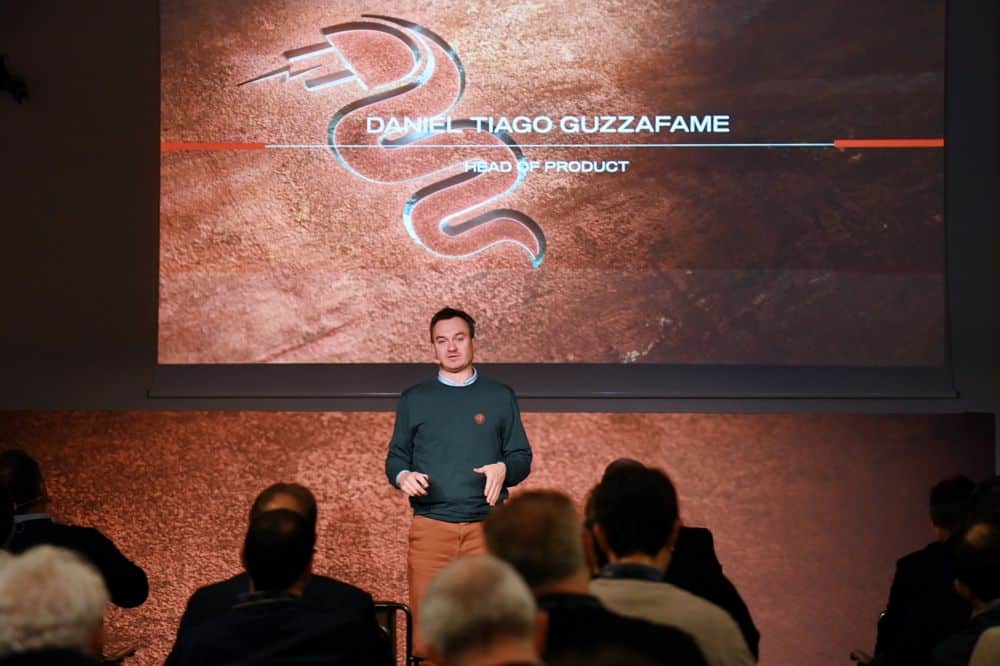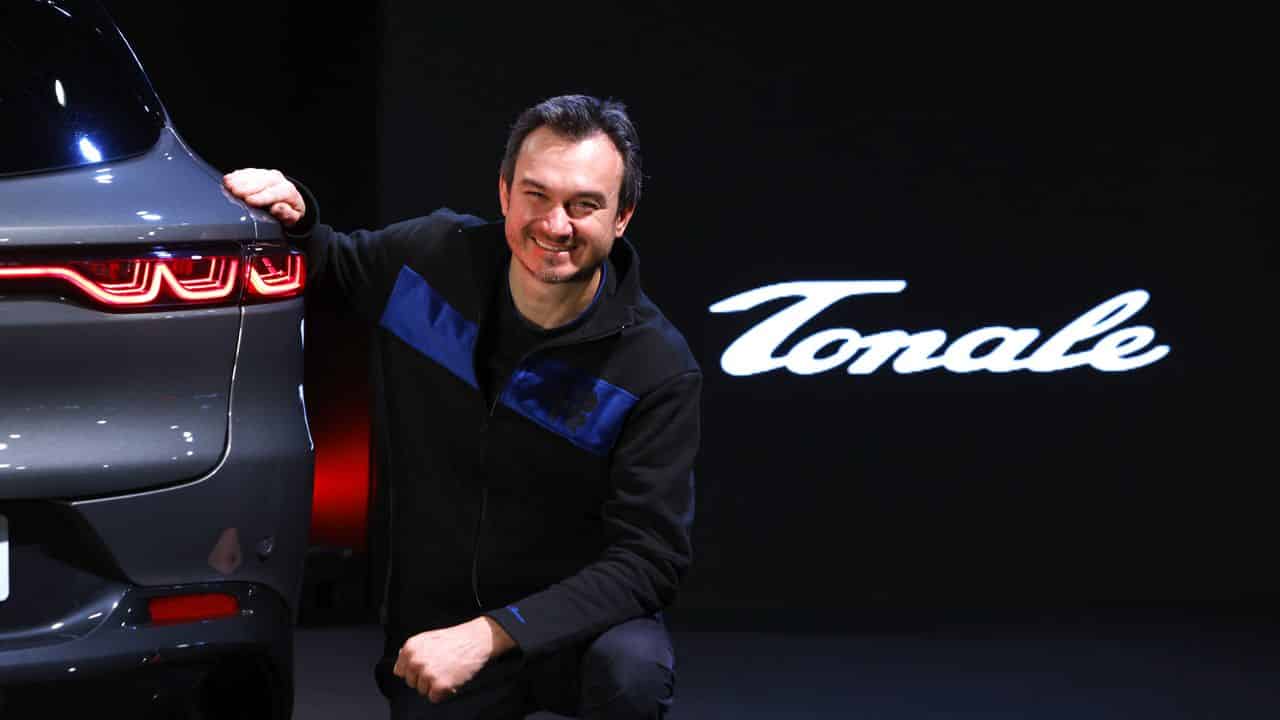In recent years the blockchain technology and its applicationsnot only cryptocurrencies, has overwhelmingly conquered itself the attention of many companies. NFTs (Non-Fungible Tokens), in particular, are used in those contexts where it is needed unequivocally attribute the paternity of a digital asset. Among the companies that use it we also find Alfa Romeo which, with the Tonale, makes the NFT a vehicle status certification tool. To understand where the idea comes from and what exactly it is about, we went to interview Daniel Tiago Guzzafamehead of Alfa Romeo Product.
Good morning engineer. First of all, thank you for granting us this interview.
For our readers who don’t know you yet, would you like to briefly tell us about yourself and the path that led you to your current position at Alfa Romeo?
I was born like aerospace engineer with the dream of becoming an astronaut. In fact, more than becoming an astronaut to work in the world of aerospace. After a series of international experiences in the aerospace field I decided to move into the world of trains first and the automotive world immediately afterwards.
I entered the Stellantis world, then Fiat, in 2006; where they were given to me many opportunities for both professional and personal growth. In 2009, with the merger of Fiat and ChryslerI am went to Detroitwhere I stayed until 2012, the year in which I returned to Italy. Once back home, I worked up a series of developments of cars of the various brands including the Giorgio project for Alfa Romeo. As soon as the opportunity arose, after various technical and managerial tasks, in 2020 I entered the world of planning and then, in 2021, in the Alfa Romeo team. Now, for almost two years, I am responsible for the product of Alfa Romeo.
I have a background much more technical than commercial, as one would expect in my position. But this also allows me to have those interactions and that driving which are the great peculiarity of the Alfa Romeo world.
Alfa Romeo is proposing an innovative use of NFTs in the automotive field. Can you tell us about it?
The idea is born about halfway through last year, at the peak of NFTs as the general public knows them. It was already clear that there is one behind it very interesting technology from the point of view of potentialbut it was just as clear that from a business point of view many things still needed to be clarified. The theme for us was how to leverage blockchain technology so that it had tangible value. In fact, there are several avenues we can take that can broaden our business strategy and, of course, enforcement first on Tonale and then on Giulia Stelvio it is part of a larger journey.
All the discourse started from the data. Today, if we think about our telephone, we’re not so worried about the hardware anymorewhich we can easily repair or replace, how much of the data that is kept inside it. In the automotive world this concept it is not yet pervasive as in other objects which we use regularly, but is definitely on the horizon. As that cars are increasingly connected and manage increasingly large amounts of datasome even very personal, becomes important move from a security intended in a physical way to one that also concerns the data managed by the car.
Today a customer no longer asks us if a car is safe, but takes it for granted. The same thing must be the so software that governs the vehicle. This is a journey which, in fact, is starting; And the blockchain fits right into this data-related transformation. Obviously, this is a very long transition in terms of time.
The question we asked ourselves was therefore how could we start bring this technology to something that everyone today understands and that it is able to give added value. The answers were two; the first is, trivially, the residual value of the car while the second is the guarantee that a car is part of a special or limited series. The blockchain can provide us with a non-corruptible system (not even by us) for vehicle data management. This allows for certify production data and original equipment; all information that today the end customer does not possess in certain form. Our intention is not to provide a digital document that could be manipulated but something that is certified and incorruptible.
We decided to give the data the structure of an NFT because it turned out the simplest form with which not only to manage them but also to transfer them in the event of a sale.
I want to emphasize that the process hasn’t been about taking the NFTs and figuring out what to do with them but the exact opposite: we came to the NFT because it seemed to us the best tool to do this type of operation. We are parties with Tonale in the first half of last year and now we are adding features. The beauty of this technology the possibility of making updates on a continuous basis even for those who have already purchased the car. An example is the updates to the Tonale NFT system for the hybrid engine power mode tracking. This can have a very high value for a company who owns a car fleet because it puts it in a position to demonstrate whether or not it has achieved its sustainability goals environmental. Many more extensions are expected to arrive in 2023.
 Photo by Gian Mattia D’Alberto / LaPresse
Photo by Gian Mattia D’Alberto / LaPresse
NFT technology is certainly well received by young people, but what kind of feedback do you get from those a few years older?
This is a theme that we had obviously thought about given that the age target of our customers is in the medium-high range. I have to say though the response was quite surprising. For this specific application, in fact, there is new technology on one side but on the other they touch the chords of customers who have already had experience in buying and selling cars. This leads to a fairly even balance. Surely there are different barriers based on the age group; However I must say that the interest is very balanced.
The NFT and blockchain system integrates with your new technology that you have named telematics box. What can you tell us about it?
Telematic box is de facto a device that takes care of data management and connectivity. Let us also remember that, in fact, in Europe, an emergency call unit has been mandatory on all new cars for about a year and a half. There telematic box performs this task but also does much morebecause it allows you to access all our online services.
With the addition of NFTs, the user has the right to share at the blockchain level, a series of data used to define the use of the car. On this aspect the issue of free will is very important to us. The choice whether or not to share your data is, as it should be, in the hands of the user e telematic box should not be seen as a control tool but as a integration opportunities.
The telematic box allows us to provide 360-degree value-added services. For example, it trunk unlocking when a package is delivered to me and I want it deposited directly in the car. Another possibility is the activation of the heating/air conditioning remotely to arrive by car with an already acceptable temperature.
From what we know you are also investing heavily in automotive cybersecurity, a topic that is gaining more and more attention. Can you share some details with us?
La cybersecurity is for us another of the key points. Because, as I said before, the topic of data protection interests us and affects us more and more closely.
This means, first of all, the protection of the cari.e. make sure that it is the user who controls it and not an external entity. We have decided to start on Tonal this path because we believe in it a lot and also given the socio-political scenarios that are emerging worldwide. Indeed, it is known that the circulation of a vehicle may be subject to restrictions in some countries depending on where it was manufactured. This is understandable, why the sensor equipment of a modern car is such as to make it usable for purposes other than those for which it was designed.
Inside Stellantis we have our own regulation regarding cybersecurity given that, unlike other areas, such as autonomous driving, there is no global regulation. To ensure the safety of the car and the data inside we insert a gatewaya piece of hardware that represents a obligatory point of passage for the data and which carries out continuous monitoring of the system. The gateway makes use of a series of proprietary technologies for, for example, authorize maintenance operations; which represent one of the moments in which the vehicle is most exposed to external attacks.
All of these are applications that we now take for granted in many contexts (think for example of telephones and PCs) but which in the automotive world still have little response today. The two realities, however, are approaching very quickly. Our strategy is to drive this connection which, probably, it’s happening faster than the average user thinks of the car.
















Leave a Reply
View Comments